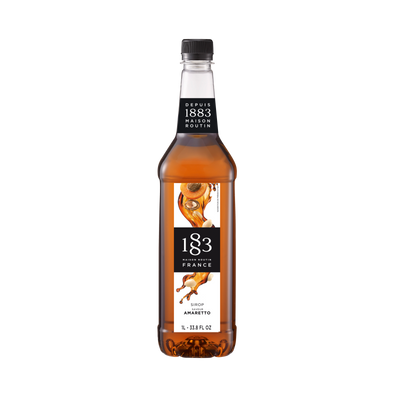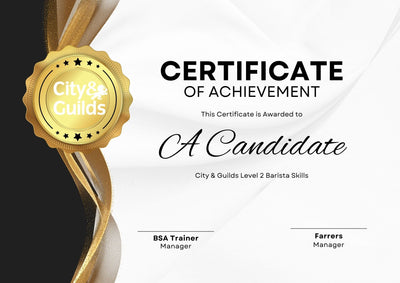Brazil Montero Fermented Coffee
Origin: Brazil
Process: Natural Anaerobic Fermentation
Producers: Anderson Monteiro
Grown: Fazenda Boa Vista, Alta Mogiana
Altitude: 1250 metres
Varietals: Yellow Catucai, Red Catuai and Topazio
Cupping Score: 83-87
Tasting Notes:
This lot is bursting with floral, lemon, honey and tropical fruit notes, it has a round creamy body and a pleasant well-rounded finish.
Brew Guide:
An all-round coffee, but especially suited to Cafetiere and V60
French Press:
- Steep
- Coarse grind
- 35g to 500ml water
- 91-96 ℃
- 3-5 minutes
Pour Over:
- Drip
- Medium Grind
- 30g to 500ml water
- 91-96 ℃
- 2-4 minutes
Roast Info:
Light to Medium Roast
Farm Info:
Boa Vista Farm is a 52-hectare farm run by Anderson Monteiro. The family first became involved in coffee production in 1970’s through the Monteiro-Andrade family’s patriarch, João Rodrigues de Andrade, who thanks to his parents and grandparents inherited a deep passion for the land and for coffee cultivation. Being from a modest background meant that he started with a small coffee crop, gradually expanding over the years through sheer hard work and family collaboration, finally being able to buy his own farm Boa Vista in 1999, setting out his stall to create a legacy for his family.
He later married Aparecida Monteiro de Andrade, sometime later they had four children; Valéria, Emerson, Anderson, and João Paulo. In 1999 João managed to buy Boa Vista Farm and embarked on creating a legacy for his family. Sadly he died in 2011, but undeterred his wife Aparecida too up the reins, introducing a number of new practices including crop management and a range of varietals more favoured to the soil characteristics and climate. Subsequently Anderson and his brothers all followed in their in their parent’s footsteps and now help run the family farm.
Processing Info:
The farm has developed a number of different methods for fermenting the coffees they produce. In this instance they use natural anaerobic fermentation.
In scientific terms this means this is a metabolic process, which converts carbohydrates (sugars) into organic acids, gases, or alcohols under anaerobic conditions. ‘Anaerobic’ simply means without the presence of oxygen. So from a processing pint of view, producers ferment their coffee in hermetically-sealed containers, such as large tanks or plastic barrels, which allows these containers to be placed in temperature-regulated storage areas or water tanks.
As a result of the oxygen-free environment, microorganisms break down the sugars at a much slower rate, creating a more complex flavour profile in the resulting coffee. Producers can choose to carry out anaerobic fermentation in different ways. One such option is the natural anaerobic fermentation process, this process uses whole cherries, which are often fermented for up to 96 hours. After which in the case of Boa Vistas coffees are then processed naturally, which involves spreading the fermented coffee out on raised beds to dry. Drying for their speciality coffee crops frequently takes between 20-25 days, depending on the climate at the time of harvest.
Coffee Country Info:
Just under 40% of the world’s total coffee production comes from Brazil, around 3.7 million metric tonnes every single year. Brazil produces everything from natural Robusta to Brazil Santos Screen 17/18, and the distinctive Rio Minas 17/18. However, in recent years, Brazilian producers have begun to invest and focus more on specialty coffee production.
Fazenda Boa Vista, itself is located in the Ibirací, a coffee growing region of Alta Mogiana, in the northern part of the state of Sao Paulo. This area is a lush green paradise, known locally as ‘Green Gold’, which boasts an excellent climate, rich fertile soil, and a favourable altitude for coffee growing.
The Alta Mogiana region in Brazil derives its name from a combination of two factors: its geographical location and historical influences. The term "Alta" translates to "high" or "upper" in Portuguese, referring to the region's elevated terrain. This area is characterised by higher altitudes compared to the surrounding regions, which plays a significant part in contributing to its unique climate and fertile soil, making it ideal for coffee cultivation.
The second part of the name, "Mogiana," stems from the historical background of the region. During the early days of colonization in Brazil, the territory was inhabited by indigenous tribes. However, in the 18th century European settlers began to explore and settle in the region. The name "Mogiana" originates from the railway system that was developed to connect the cities of São Paulo and Minas Gerais. This railway played a vital role in transporting goods, especially coffee, from the coffee-growing regions to the ports for export. The term ‘Mogiana’ originated from an amalgam of the Mogi-Guaçu River, which the rail line crossed.
As coffee production expanded in the region and gained recognition for its exceptional quality, the Alta Mogiana became synonymous with high-quality coffee production. Over time, the name "Alta Mogiana" became commonly used to refer to this specific coffee-growing region. Today, the Alta Mogiana is renowned for its high-quality Arabica coffee production.





